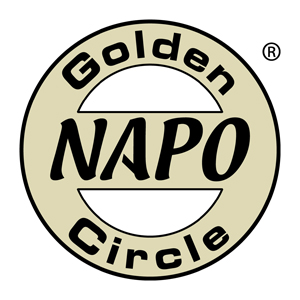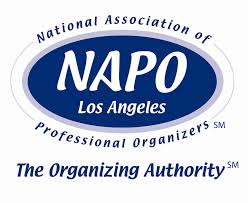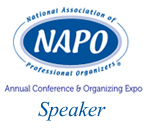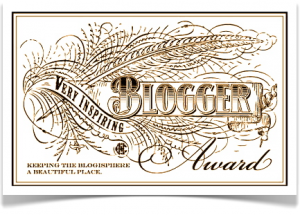RamonaCreel.com
My World
| I'm mid-site-redesign. Formatting temporarily sucks and some functions (like subscribing to blogs) are broke -- sorry! If something ain't working for you, contact me and I'll do it manually. Thanks for your patience while I fix everything that's wrong! |
- Shit You Can Buy From Me
- The Mass-Media Madhouse
- The Mass-Media Madhouse
- Smart-Ass Entrepeneurial PR Quotes
- Smart-Ass Organizational PR Quotes
- Smart-Ass RV/Travel PR Quotes
- Haphazard Book/Blog Contributions
- What A Long-Form Interview Looks Like
- As Seen On…
- Airstream Live Riveted
- Professional Organizer’s Blog Carnival
- Smead Organomics
- WBCCI Blue Beret Magazine
- Organize My Drawer
Search
Newsletter
Tags
cleaning out and decluttering resume / bio workplace organizing #GettingOrganized systems and routines professional organizing and accountability coaching social commentary green living recipes seasonal holidays the administrative side of RVing planning ahead health and wellness making your house a home space planning setting up your workspace saving money your relationship with stuff RV living organizing kids daily household routines paper and information management drawing boundaries and setting priorities getting stuff done protecting your financial interests performance art author quotable quotes household organizing storage solutions stress reduction basic organizing principles travel and recreation having the life you want RV parks fiction and creative writing #BlogsArticles publicity artist running your own business #GoalSetting managing your money defining your career calling technology making money hitching/towing/driving preparing for the unexpected how you structure your company maintaining and upgrading your rig getting your finances organizedShit I Create
Home / Shit I Create / Bitten By A Very Dramatical Bug — From Terrible Performer To At-Least-Somewhat-Serious-Play-And-Screenwriter / Amelia's Going Down
Amelia’s Going Down
For my third-ever theatrical production, I was asked to participate in a live old-timey radio drama. (Yes, I know the title makes it seem like porn. But the “going down” part refers to a tragic historic plane crash — not public acts of fellatio. I promise.) The writer/director (a friend from Ghosts Of The Underground ) told me that he desperately needed my “energy” for the character of a quirky and humorous foley artist — an incredibly kind way of saying he wanted a complete spaz for the role. Moral of the story? I don’t need to audition for a part — I’ll just sit back and wait until folks hand me roles they feel suit my personality!
Solving A National Mystery
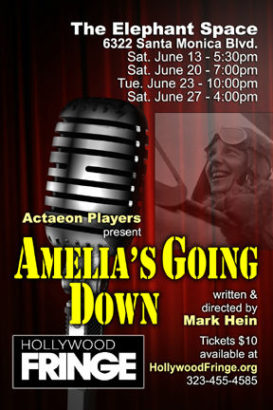 As any grade-schooler knows (or at the very least should know), Amelia Earhart disappeared in 1937 while attempting the first feminine aerial circumnavigation. Sans any actual concrete evidence, officials decided that her plane must have sunk into the pacific, taking the pioneering pilot and her navigator Fred Noonan with it. (Certainly plausible. Amelia had crashed at least twice before, and they were sort of screwed from the start — she regrettably left a crucial secondary antenna behind to “save weight,” her charts were outdated, neither she nor Fred knew morse code, and the overcast weather would have thwarted their celestial navigation skills.)
As any grade-schooler knows (or at the very least should know), Amelia Earhart disappeared in 1937 while attempting the first feminine aerial circumnavigation. Sans any actual concrete evidence, officials decided that her plane must have sunk into the pacific, taking the pioneering pilot and her navigator Fred Noonan with it. (Certainly plausible. Amelia had crashed at least twice before, and they were sort of screwed from the start — she regrettably left a crucial secondary antenna behind to “save weight,” her charts were outdated, neither she nor Fred knew morse code, and the overcast weather would have thwarted their celestial navigation skills.)
But what if the impact didn’t kill them? What if they survived, stranded on a deserted island in the middle of the ocean? That’s the idea our show creator had more than 20 years ago before turning his thoughts into this play.
Amelia’s Going Down imagines the famous duo on a safe patch of sand after ditching their failed Lockheed Electra — lasting days/weeks/months, before succumbing to starvation or disease. Ironically, by the time of our production, scientists had found a good bit of evidence suggesting that Fred and Amelia set down on a reef alongside the Nikumaroro atoll, then used the last of their fuel to run the radio. (At least 100 people around the globe heard distress calls reporting a partial water landing.) Unfortunately, their wreckage was swept into deep water before the navy launched a fly-over — and “signs of recent habitation” reported by rescuers were incorrectly attributed to locals. Recently, folks at The International Group For Historic Aircraft Recovery (who knew there even was such a thing??) discovered a 19″x23″ aluminum panel (identical to the al-clad skin of Earhart’s plane), a woman’s heel (that matches a shoe worn in Amelia’s publicity photos), and a pot of freckle cream (which I can’t envision the natives using). Pretty convincing!
Life On The Fringe
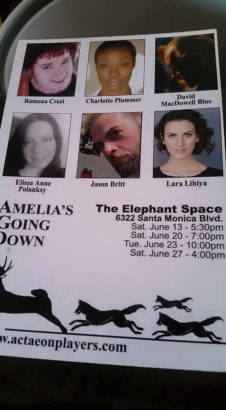 Unlike the other shows I’d done (which were produced within the confines of a highly insular community, where you knew pretty much every audience member), Amelia was headed for Hollywood Fringe Festival — one of the biggest alterna thespian gatherings in the country. In case you’re unfamiliar with the concept of “fringe” theater, here’s a little history lesson. The movement was born in 1947, when eight uninvited troupes set up shop along the edges of the Edinburgh International (causing an initial uproar, but eventually becoming a treasured cultural institution). This cheeky Scottish upstart became the largest arts festival in the world — I’m talking 50,000 performances of 3,000 shows over a three-week period. And its L.A. counterpart is the west coast’s preeminent setting for debuting new work. Seem weird in the land of movie stars and celluloid? Tinseltown has an absolutely BOOMING indie stage scene — with more than 400 venues scattered across the metropolitan area. So I knew we’d be in good hands.
Unlike the other shows I’d done (which were produced within the confines of a highly insular community, where you knew pretty much every audience member), Amelia was headed for Hollywood Fringe Festival — one of the biggest alterna thespian gatherings in the country. In case you’re unfamiliar with the concept of “fringe” theater, here’s a little history lesson. The movement was born in 1947, when eight uninvited troupes set up shop along the edges of the Edinburgh International (causing an initial uproar, but eventually becoming a treasured cultural institution). This cheeky Scottish upstart became the largest arts festival in the world — I’m talking 50,000 performances of 3,000 shows over a three-week period. And its L.A. counterpart is the west coast’s preeminent setting for debuting new work. Seem weird in the land of movie stars and celluloid? Tinseltown has an absolutely BOOMING indie stage scene — with more than 400 venues scattered across the metropolitan area. So I knew we’d be in good hands.
Knowing that we were going live at Fringe told me a few things about the production — it would be small, low-tech, cutting-edge, and in very good company. I could expect relatively few rehearsals (I think the final total was eight) and only a few performances (four, as it turned out). I would be supplying all my own sound effect equipment, as well as a costume. (I found my entire “Rosie The Riveter” outfit in a single thrift store visit. Well, minus my mother’s bandana — a slightly anachronistic relic from the 60s rather than the 40s, but I was happy to be able to put it to use. And now I know how to tie a pin-up headscarf, which is always a handy skill in Los Angeles!)
We ended up in a much nicer theater than I expected — I almost didn’t know what to do with myself in the presence of a real sound system and better-than-Home-Depot stage lighting! But festivals like this maximize their lineup by packing ’em in. No time for dilly-dallying — we had all of about 15 minutes to set up, and needed to completely vacate our performance space within 10 minutes of the curtain going down. Thank goodness we had pretty sparse set dressing (a couple of chairs, a mike stand, two black cubes, and a table for my sound effect equipment).
The Fine Art Of Foley
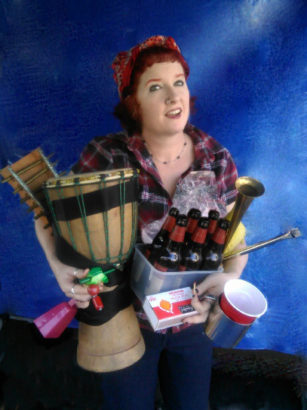 In the writer’s mind, my character was meant to be sort of a smartass female Harpo Marx, communicating more often via honks and clangs and whistles than words. Since I am (and will forever be) terrified of forgetting my lines, this suited me just fine! But when I went through the script (and found next-to-no foley cues) I worried that there really wasn’t much for me to contribute to this show.
In the writer’s mind, my character was meant to be sort of a smartass female Harpo Marx, communicating more often via honks and clangs and whistles than words. Since I am (and will forever be) terrified of forgetting my lines, this suited me just fine! But when I went through the script (and found next-to-no foley cues) I worried that there really wasn’t much for me to contribute to this show.
I should have known better — part of my job was to figure out what KINDS of background noises we needed, based on how the actors presented their lines (as they mimed the radio play action on stage while reciting their dialogue). So I used the same part of my brain that’s good at scouring the landscape for interesting photography images to root out potential auditory embellishments hidden in the story.
Amelia collecting wood or checking the plane’s flaps, Fred removing illicit bottles of booze from the cockpit to start a fire, a failed radio transmission, a slurp while drinking tea — all opportunities to give the show a little extra personality. I studied foley technique online (yet another completely random and useless skill for my CV), then did my best to translate said research into practical sound effects. My life became an exercise in aural creativity — twisting a ratchet (to simulate turning knobs), crinkling cellophane (for flames and staticky airwaves), tapping my djembe (when Amelia thumps the gas tank and finds it empty), crunching solo cups in kitty litter (creating footsteps on a beach). Unfortunately, not every experiment was a success, and some methodologies were quickly discarded. (Like faking frog chirps by twanging the tines of a plastic comb — this might work in a sound booth, but the audience never would have heard me from the stage. An amazonian wooden güiro projects much better — and it gives me a toy to play with for years to come.)
I gathered up junk from around the house that would serve my many purposes (beer bottles, metal panels off a disassembled CPU, palm fronds from out in the yard). But I also went shopping. (Wow — it’s amazingly hard to find a good slide whistle these days! Who’da thought I’d finally land one at Guitar Center?) I also splurged on an Audobon society bird call and a brass Harpo horn, because who knew when I’d have a good excuse to get either one ever again in the future! By opening night, I had one hell of a foley kit put together. (Still got it — I’m ready to roll should a noise-making crisis arise while we’re out on the road!)
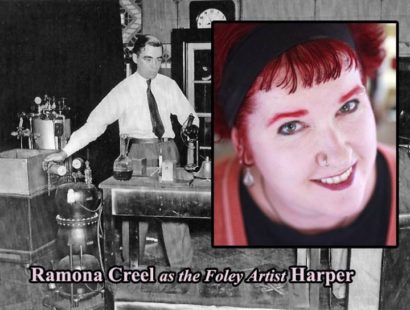
When I wasn’t “sound-effecting,” I sat to one side of the stage with the other characters who weren’t currently on-mike. We were supposed to be watching the radio drama and waiting for our turns, reacting, emoting, and weaving in subtle subtexts through our interactions with each other — all without saying a goddamned word! Can I just say that supporting a scene silently while trying not to draw attention away from what’s going on mainstage is hard work!
So instead of crafting dialogue, I had to come up with two or three storylines that could run just beneath the surface of the main action — giving me something to do other than stare passively while other people performed. Alcohol was a big theme in this show, as Fred Noonan had a (possibly undeserved) reputation as a lush, and another character had just gotten back to work after nearly drowning his career in a bottle of Jack Daniels. I became the supportive 12-stepper, sober 7 years now after alcoholism just about destroyed my life. (Did you know you can buy AA medallions on eBay?) In fleshing out a backstory, I also suggested a long-term lesbian relationship with the show’s narrator. A particularly difficult monologue about what it’s like to be a drunk hits the normally gregarious Harper like a punch in the gut, causing her to go to a dark and isolated place on stage — it’s a very touching moment when Ronnie comes over to comfort her, and you can see the depth of all they’ve been through together. Considering the fact that I said maybe a dozen words throughout the whole performance, I feel like I contributed a lot to the richness of what could have otherwise been a very one-dimensional portrayal.
Thickening The Skin
 One very important lesson I learned during this run was to take criticism with a grain of salt — no, more like the whole damned cellar! I don’t pretend to be a good actress (with zero training and next-to-no experience). But what I lack in substance, I make up for in style. Up until our second night at Fringe, audiences had nothing but positive comments for my stage work. The only negative feedback I’d ever received were notes from my director (which were part of the creative process, rather than displeasure with my performance). Then I met the most awful theater-goer in all of Hollywood.
One very important lesson I learned during this run was to take criticism with a grain of salt — no, more like the whole damned cellar! I don’t pretend to be a good actress (with zero training and next-to-no experience). But what I lack in substance, I make up for in style. Up until our second night at Fringe, audiences had nothing but positive comments for my stage work. The only negative feedback I’d ever received were notes from my director (which were part of the creative process, rather than displeasure with my performance). Then I met the most awful theater-goer in all of Hollywood.
This guy pulled me aside after the show, and told me I deserved the “Worst Supporting Actress At Fringe” award. I was shocked! What the hell had I done?? Apparently, he found my “cricket” noises during a conversation between Amelia and Fred terminally annoying. I was crushed — I’d ruined the show. All my hard work was for naught, as the pride I’d felt about my foley skills disappeared in a cloud of humiliation. Clearly, the only purpose I served was to muck up everyone else’s performance.
When I (on the verge of tears) shared this soul-shattering experience with my fellow castmates, they laughed and told me not to worry. Apparently, this dude had a hateful remark for each of them. Our most veteran actor was told, “this cost me 16½ cents per minute, and I regret every penny” — and he’d let the director he considered this a contender for worst play every written. However, (seasoned dramaturgists that these folks all were), everyone else had just blown him off as a nut. The director also shared a fact with me that Le Critique hadn’t bothered to mention — the man’s half deaf but too vain for a hearing aid, so he’s forever bitching about “sound” in the plays he attends (be that enunciation, music, or foley). Probably not the best behavior for a reviewer!
I was pleased to learn that I wasn’t the only one (having felt completely singled-out). But I did tone down my cricket noises the next performance — and I’m much more cautious about making sure any criticism I give a cast is 100% constructive. Never let it be said that I’m un-coachable!
- Feasting At The Hollywood Fringe Festival — The tasty, and delectable Amelia’s Going Down at the Elephant Theatre, directed by Mark Hein. It is a poignant and tender production that imagines Amelia Earhart’s fated last journey ending on a desert island with her navigator Fred Noonan. The story is told uniquely, embracing radio drama as a backdrop to the action onstage. As such, this is a production that draws the audience in, demanding their attention. This is not so much InYerFace theatre as InYerEars theatre — a subtle, thought-provoking and well-crafted piece with solid performances from the likes of Lara Lihiya and Jason Britt in the roles of Earhart and Noonan, supported by a diverse cast that includes Ramona Creel (who did an outstanding job on foley), Charlotte Plummer, David MacDowell Blue, and Elissa Anne Polansky.
- A Solid ‘See It’ — It is a sweet story that posits a possible outcome of Amelia Earhart’s fateful last flight, as performed by a set of actors doing a live radio play. Ramona Creel’s character was in charge of the sound effects for the radio show, and she did a great job with them. I like that the actors weren’t glued to the microphones the whole time and were allowed to get swept up in the story. However, I would have liked them to have spent more time at the microphones to solidify the radio show aspect a bit more. There are definitely aspects of the production that could be improved, but the story is worth seeing.
- A Lovely Show You Shouldn’t Miss — Very heart-felt, imaginative show. Great acting, and the writing was quite good for the scenes that are “on the air.” I’m also a sucker for live foley, so that was a lot of fun, though I almost wish it was utilized more!
- Well-Crafted, Well-Acted — I enjoyed Amelia’s Going Down. An interesting notion to explore what may have happened if Amelia and navigator, Fred Noonon, had survived the crash, but landed in a place so remote that rescue was unlikely. Set as a radio play, complete with live foley (which was a nice touch, tastefully done), Amelia and Fred each face down their own demons, particularly well done with strength and subtly by Jason Britt as Noonan confronting his battle with alcohol. The actors are not bound to the prop microphone, so the production opens up as a smart stage piece, but the production-within-a-production is never lost, keeping the period piece feel sparkling throughout. Highly recommend.
- A High-Concept Play Presented As A Radio Drama — As a fan of OTR (old-time-radio), I often go to sleep listening to shows like X-Minus-1 and The Shadow. I made amateur radio shows back in my college days too. I tried closing my eyes throughout the production and had that successful radio experience. I also like that the narrative visited common themes of the era and dealt with it in the terms of the era. The contextualization of the experience (via a well-constructed concert of foley sound effects) was really well done.
Copyright 2016 RamonaCreel.com
Make Your Friends Jealous! Show Everyone What A Big Fricking Brain You Have! Be The First To Share This Amazing Content With Them!
- Click to share on Facebook (Opens in new window)
- Click to share on Twitter (Opens in new window)
- Click to share on LinkedIn (Opens in new window)
- Click to share on Reddit (Opens in new window)
- Click to email this to a friend (Opens in new window)
- Click to share on Tumblr (Opens in new window)
- Click to share on Pinterest (Opens in new window)
- Click to share on Pocket (Opens in new window)
Tags: artist, author, creative thinking, fiction and creative writing, performance art
 PS: Wanna instantly rack up some serious virtual cred? I've made it easy for you to share this content with your social networking friends, e-mail it to your peeps, or republish it in your own blog (thereby showing off how smart you are) with these links.
PS: Wanna instantly rack up some serious virtual cred? I've made it easy for you to share this content with your social networking friends, e-mail it to your peeps, or republish it in your own blog (thereby showing off how smart you are) with these links.
(iCopyright widget here)
"I Have More To Say About This... No Surprise!"
If you would like to reprint this page, please contact me
Comments are closed.
